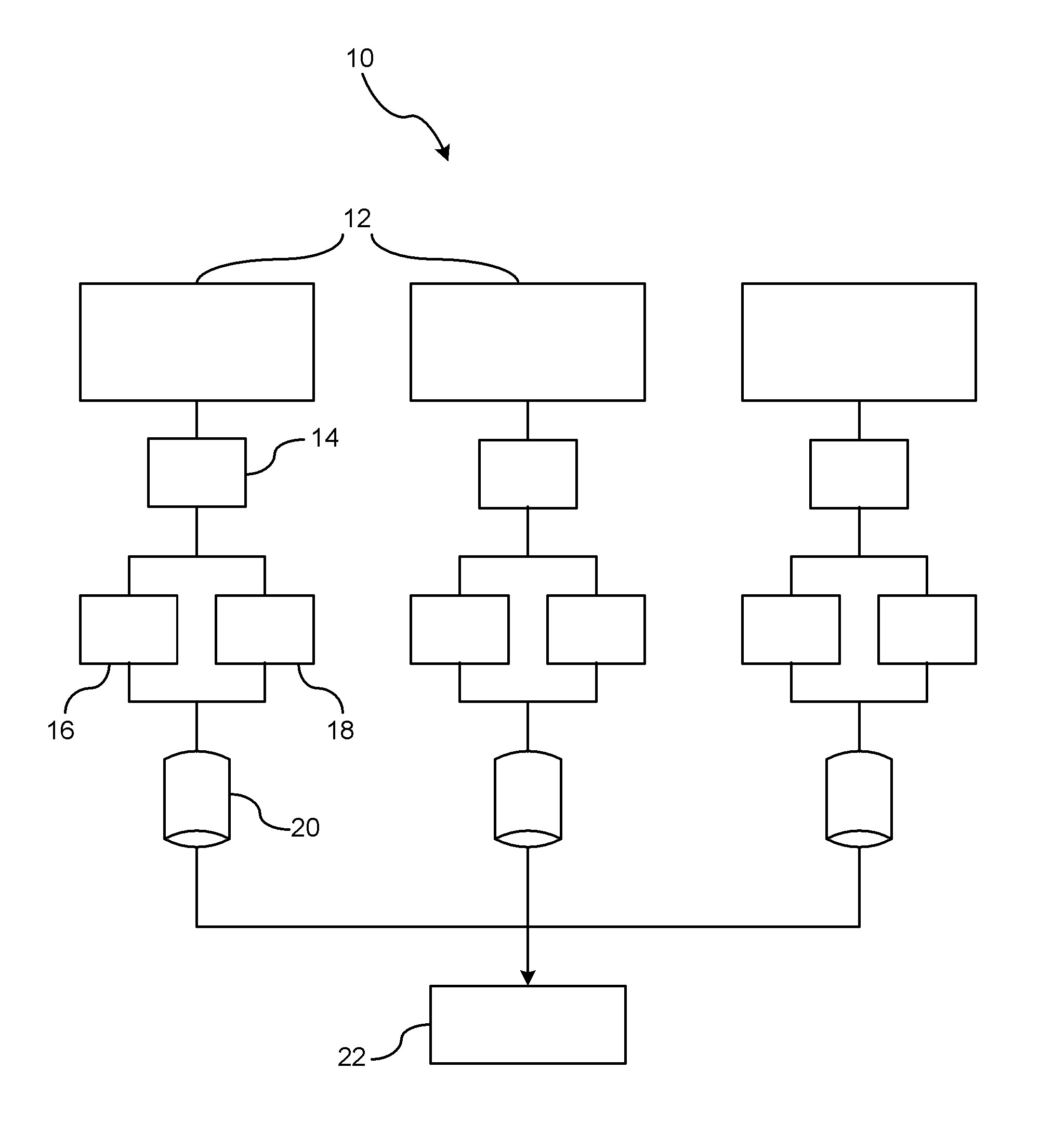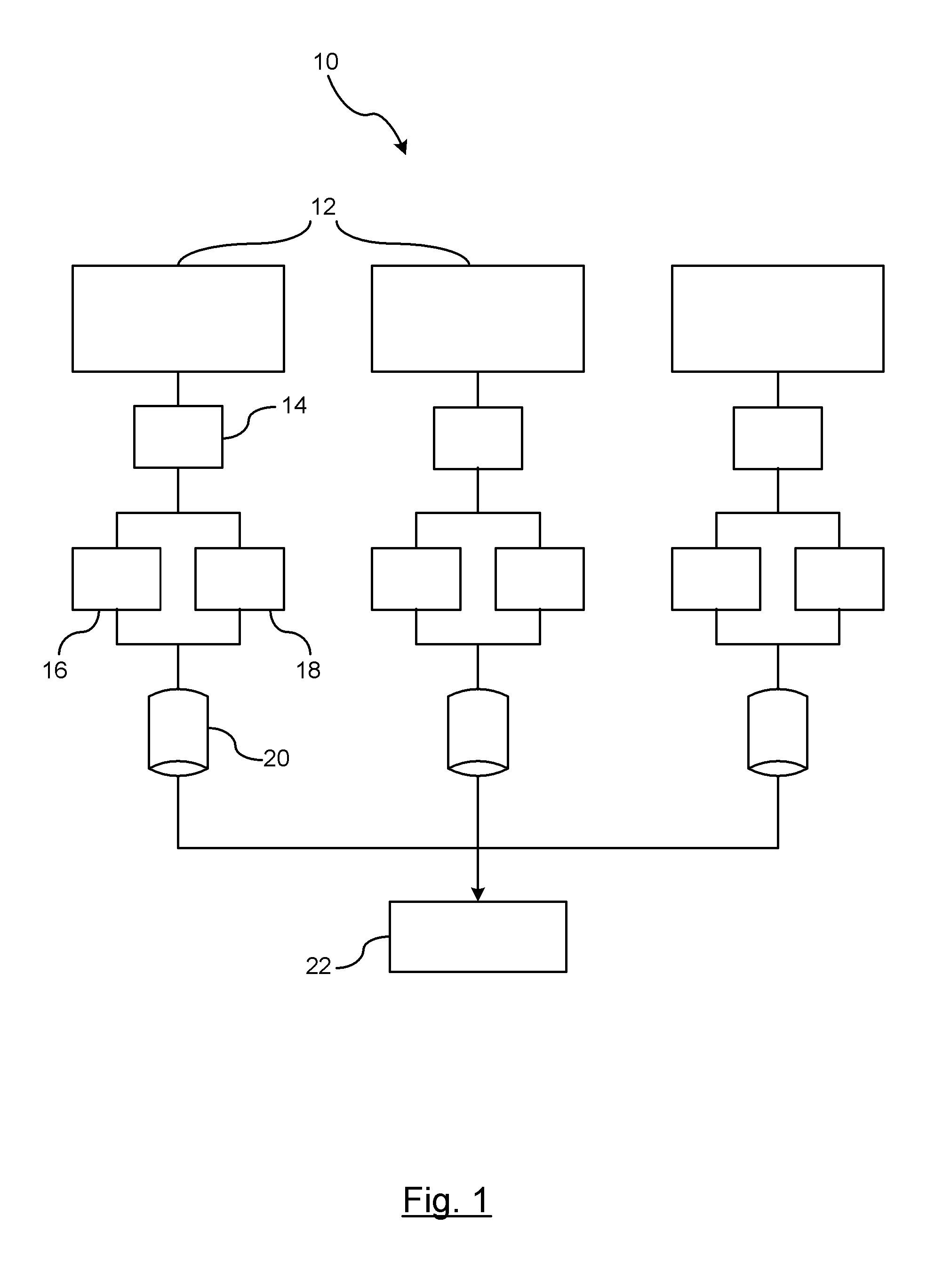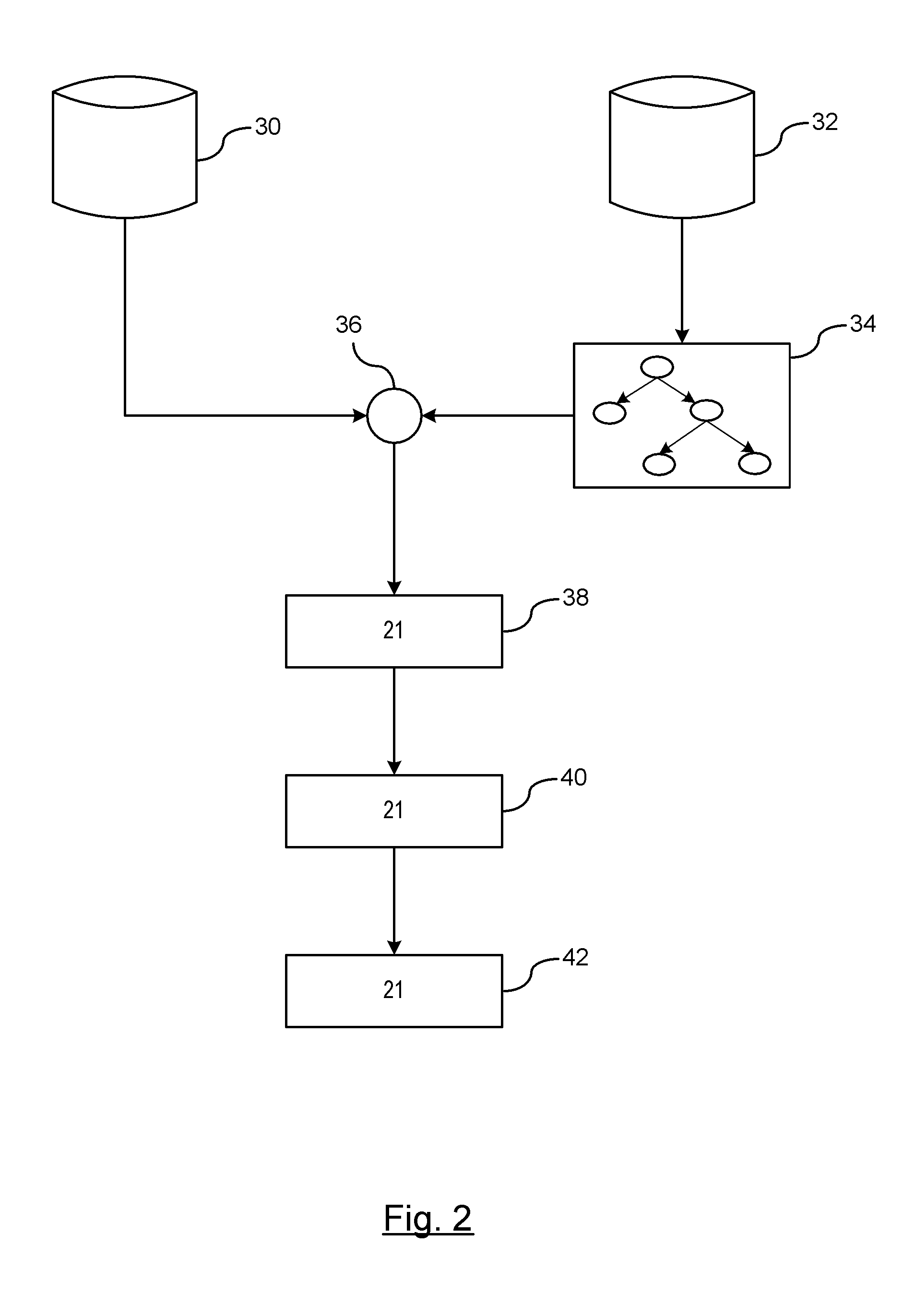Detecting anomalies in fault code settings and enhancing service documents using analytical symptoms
a technology of fault code and anomaly detection, applied in the direction of instruments, testing/monitoring control systems, process and machine control, etc., to achieve the effect of reducing the number of warranty repairs and reducing the no-trouble-found (ntf) ra
- Summary
- Abstract
- Description
- Claims
- Application Information
AI Technical Summary
Benefits of technology
Problems solved by technology
Method used
Image
Examples
Embodiment Construction
[0013]There is shown in FIG. 1 a diagnostic repair reporting system 10. The diagnostic repair reporting system 10 includes a plurality of service centers 12 for reporting diagnostic trouble codes (DTCs) obtained from servicing vehicles. It should also be understood that the data may be retrieved from fleet vehicles and test vehicles during both the development stages of the vehicle and early production stages of the vehicle. Obtaining DTC data and analyzing the DTC data for anomalies during the development stages or early production stages assist in reducing the number of service and warranty claims made on the vehicle.
[0014]To determine whether a misdiagnosis has occurred for a specific service repair, repair data is retrieved from the service shops. Original equipment manufacturers (OEMs), such as automotive companies, maintain an online repair reporting system. Moreover, OEMs collect data from test vehicles and fleet vehicles. In this example, the vehicles are brought to a servic...
PUM
 Login to View More
Login to View More Abstract
Description
Claims
Application Information
 Login to View More
Login to View More - R&D
- Intellectual Property
- Life Sciences
- Materials
- Tech Scout
- Unparalleled Data Quality
- Higher Quality Content
- 60% Fewer Hallucinations
Browse by: Latest US Patents, China's latest patents, Technical Efficacy Thesaurus, Application Domain, Technology Topic, Popular Technical Reports.
© 2025 PatSnap. All rights reserved.Legal|Privacy policy|Modern Slavery Act Transparency Statement|Sitemap|About US| Contact US: help@patsnap.com



